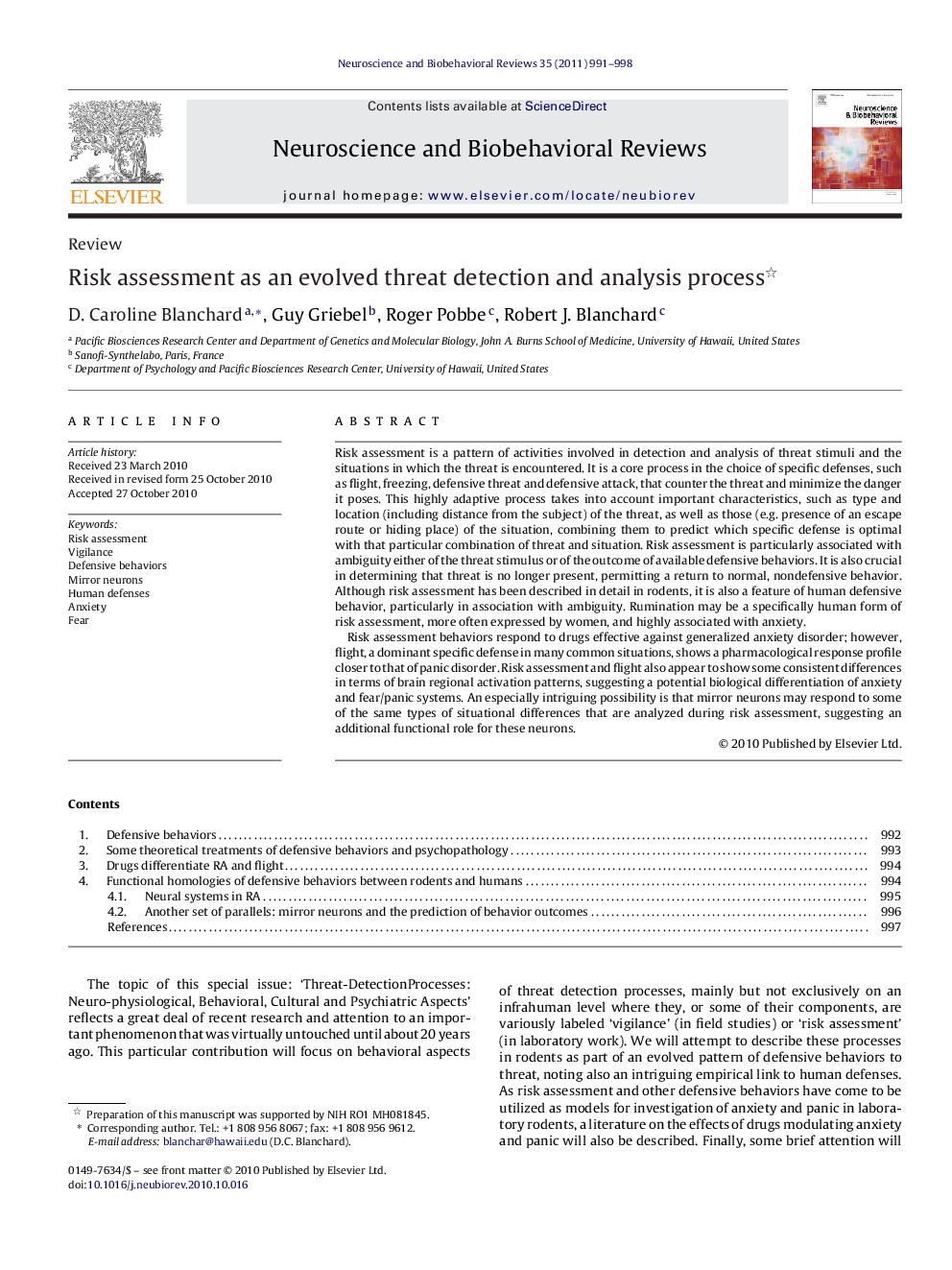| کد مقاله | کد نشریه | سال انتشار | مقاله انگلیسی | نسخه تمام متن |
|---|---|---|---|---|
| 937977 | 924566 | 2011 | 8 صفحه PDF | دانلود رایگان |

Risk assessment is a pattern of activities involved in detection and analysis of threat stimuli and the situations in which the threat is encountered. It is a core process in the choice of specific defenses, such as flight, freezing, defensive threat and defensive attack, that counter the threat and minimize the danger it poses. This highly adaptive process takes into account important characteristics, such as type and location (including distance from the subject) of the threat, as well as those (e.g. presence of an escape route or hiding place) of the situation, combining them to predict which specific defense is optimal with that particular combination of threat and situation. Risk assessment is particularly associated with ambiguity either of the threat stimulus or of the outcome of available defensive behaviors. It is also crucial in determining that threat is no longer present, permitting a return to normal, nondefensive behavior. Although risk assessment has been described in detail in rodents, it is also a feature of human defensive behavior, particularly in association with ambiguity. Rumination may be a specifically human form of risk assessment, more often expressed by women, and highly associated with anxiety.Risk assessment behaviors respond to drugs effective against generalized anxiety disorder; however, flight, a dominant specific defense in many common situations, shows a pharmacological response profile closer to that of panic disorder. Risk assessment and flight also appear to show some consistent differences in terms of brain regional activation patterns, suggesting a potential biological differentiation of anxiety and fear/panic systems. An especially intriguing possibility is that mirror neurons may respond to some of the same types of situational differences that are analyzed during risk assessment, suggesting an additional functional role for these neurons.
Journal: Neuroscience & Biobehavioral Reviews - Volume 35, Issue 4, March 2011, Pages 991–998